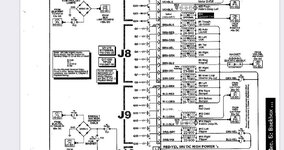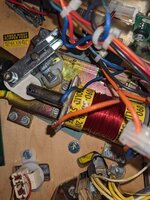So having been caught out twice by diodes, the first time not knowing what the hell they where or that they even existed and the second from having a little knowledge but still not checking the manual, I'm still a little confussed and would appreciate some help please:
1) What exacty does a diode on a coil do. My understanding is to prevent the flow of electricty back down the wrong direction. Almost like a plug/stopper, and preventing the electrictiy hitting the board the wrong way
2) from the schematic diagram below (Taken from the LOTR manual):

If we take the right flipper at the bottom does the diagram mean:
Orange-violet coloured wire soldered to coil lug that is on the end of the diode without the banding. In the right flipper photo example below the wire at the bottom:

Diode banding at the top above BLue wire
1) What exacty does a diode on a coil do. My understanding is to prevent the flow of electricty back down the wrong direction. Almost like a plug/stopper, and preventing the electrictiy hitting the board the wrong way
2) from the schematic diagram below (Taken from the LOTR manual):

If we take the right flipper at the bottom does the diagram mean:
Orange-violet coloured wire soldered to coil lug that is on the end of the diode without the banding. In the right flipper photo example below the wire at the bottom:

Diode banding at the top above BLue wire
